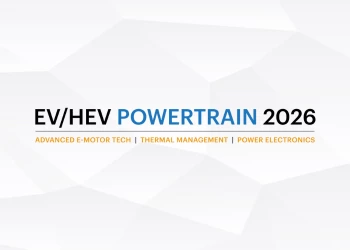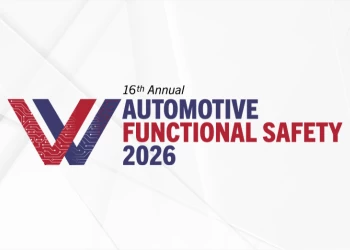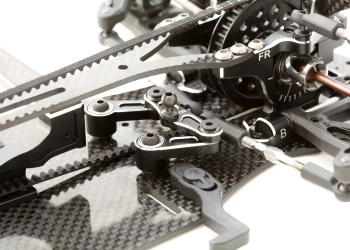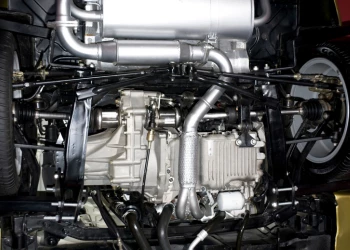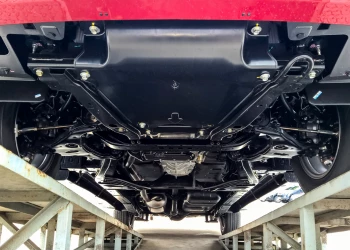Electromobility and Regenerative Braking Technology
Add bookmarkThe greater electrification of vehicles is a trend that continues at pace, and one that has led to a variety of innovations in recent years. Driven by ever more stringent emission targets, the move towards hybrid and electric cars has seen rapid development in electrical architecture in a number of sectors.
Braking technology is just one of those sectors and electrification has enabled a wide variety of advances which contribute to safety, fuel efficiency and performance. Electronic stability control, traction control, anti-lock braking, electronic brake force distribution, brake-by-wire, and regenerative braking a just a few examples of the technologies that have been gradually implemented by the automotive industry. At present and in the very near future, in-car communication networks and sophisticated sensor technology are enabling assisted driving functions such as automatic emergency braking and pedestrian avoidance systems.
While those functions may be a precursor to the eventual goals of autonomous driving, in the short to medium term regenerative braking is a vital concept towards e-mobility and fuel efficiency.
E-Mobility
The US Department of Transportation’s National Highway Traffic Safety Administration and the Insurance Institute for Highway Safety announced a historic agreement in March 2016 with regard to automatic emergency braking. The agreement encompasses 20 automakers which represent 99% of the US auto market, committing to making AEB a standard feature on all new cars from September 2022. This is a key safety measure that the IIHS estimates will prevent 28,000 crashes and 12,000 injuries during the extra three years it would have taken to push through the commitment on regulatory grounds.
Of course AEB requires sophisticated electronic architecture, and this is indicative of the general trend towards electrification.
In Europe the Platform for Electromobility published a series of recommendations in April 2016 to work towards ‘Decarbonising Transport through Electromobility’. The report states that e-mobility can play a key role in delivering the EU transport white paper objectives of halving emissions in urban centres by 2050; attaining zero emission urban logistics by 2020; and banning conventionally-fuelled cars from cities by 2050. The platform identified six EU-level actions to address the principal barriers to the shift to e-mobility in Europe:
- A comprehensive EU strategy for clean and efficiency electro-mobility on road and rail.
- To more strongly embed electro-mobility with the Energy Union and all member states’ efforts to decarbonise transport.
- Incentivising smart charging through the New Energy Market Design.
- Accelerate smart metering, interoperability and standardisation.
- Improved efficiency and further electrification of Europe’s rail network.
- Better sustainable urban mobility planning and funding to integrate electro-mobility solutions into the urban public transport network.
Clearly these are wide ranging recommendations, and that which arguably affects the automotive industry the most is the effort to embed electro-mobility into the strategy of decarbonising transport. Europe’s emission targets for 2020 and beyond are among the most stringent in the world and require automakers to deliver significant emission reductions. This is where regenerative braking is so important since the regenerative system can account for approximately 40% of the fuel efficiency improvement in hybrid cars over existing gasoline cars.
Braking Technology
One of the barriers for electric vehicles has been, and continues to be, range. In addition the weight of batteries has also been a challenge in terms of weight reduction and improved fuel efficiency. Regenerative braking helps to address both of these issues by returning power to the motor/battery in the course of braking to enhance both range and efficiency. It is not a new technology by any means, but more sophisticated systems are entering the market with a view to addressing the environmental issues. Some of the latest innovations in regenerative braking systems are detailed below.
Hyundai Mobis iMEB
In November of 2015 Hyundai Mobis announced that it had developed a next-generation electronic integrated regenerative brake system known as iMEB (Integrated Mobis Electronic Brake).
iMEB is an advanced brake system that integrates the pressure supply unit and the pressure control unit of the regenerative brake system into a single electronically driven type. According to Hyundai Mobis this allows more than a 30% reduction in cost and weight. Moreover, braking systems such as electronic stability control, anti-lock, smart cruise control and automatic emergency braking functions are also integrated.
In many conventional regenerative braking systems the pressure supply unit amplifies the power with which the driver steps on the brake, and the pressure control unit calculates and controls how much braking force will be applied to each wheel. These are usually separate modules and therefore less competitive in terms of cost and weight. Hyundai Mobis is one of the first parts suppliers to integrate the pressure supply and control units into a single system, contributing to greater efficiency.
ZF TRW IBC
Another innovative system - ZF TRW’s Integrated Brake Control (IBC) - is set to launch in high volume in 2018 for a major vehicle manufacturer. The system is the supplier’s latest development in braking tech - a vacuum independent technology which can simplify the brake system while enhancing performance.
The IBC is a single integrated unit which replaces the electronic stability control system along with the vacuum booster and the associated cables, sensors, switches, electronic controllers, and vacuum pumps where they are required for low or no vacuum configurations. Within the IBC a precision ball-screw actuator is driven by an extremely fast-acting brushless electric motor. This motor gives the system its superior braking performance and ESC capability, and can make a significant difference when combined with driver assist systems such as camera and radar to facilitate features such as AEB.
The IBC is also consistent with packaging and weight savings compared with current ESC systems, weighing just 5kg compared with 7kg for a conventional component set. For hybrid vehicles that require an electric vacuum pump the weight saving is an additional 1.8kg. The system delivers smooth brake performance for comfort, excellent NVH characteristics, very precise pressure control for systems such as ACC Stop and Go, and is tunable to the driving characteristics of the vehicle manufacturer.
In terms of regenerative braking the IBC system assists in meeting fuel efficiency targets by enabling the integration of full regenerative braking in both hybrid and electric vehicles, providing full brake blending and a fail-safe mode in regenerative systems.
Continental MK C1
Another key supplier, Continental, has recently provided its MK C1 system for the Integrated Brake System (IBS) of the new Alfa Romeo Guilia. It is the first time the new Continental system has entered series production and it offers a variety of benefits compared with conventional braking systems.
The high-efficiency MK C1 brake system is more dynamic, lighter and more compact than conventional systems. It offers greater braking force for safety systems, and short braking distances to help prevent accidents and reduce accident severity. The new integrated system also reduces pedal vibrations so the driver always feels the same force-path characteristics in the pedal, thus providing greater comfort.
With the MK C1 the brake actuation feature, the brake booster and control systems (ABS and ESC) are combined into a compact, weight-saving braking module. The system weighs up to 3kg to 4kg less than conventional systems, therefore contributing to overall weight reduction. The electro-hydraulic MK C1 can build up braking pressure significantly faster than conventional hydraulic systems, thereby fulfilling the increased pressure dynamic requirements for new advanced driver assistance systems which e-mobility trends demand. The system is can also meet the requirements for regenerative braking systems without any additional measures, making it compatible with the objectives of improved fuel economy and reduced emissions.
Summary
With the trend towards electrification and e-mobility, regenerative braking is of greater than ever importance. The driving forces behind the move towards e-mobility include comfort, safety and functionality, but the key driver is the need to improve fuel economy and reduce emissions in line with specified targets.
Regenerative braking systems make a significant contribution towards these targets by recuperating energy and increasing available power from the battery. While the long term outlook may move towards much lighter and efficient batteries as well as autonomous driving capability, the short to medium term market will rely on sophisticated braking systems to facilitate a number of key functions.
Sources:
- https://trw.com/sites/default/files/TRW_ibc_en.pdf
- http://www.continental-corporation.com/www/pressportal_com_en/themes/press_releases/3_automotive_group/chassis_safety/press_releases/pr_2016_06_22_mk_c1_en.html
- http://www.businesswire.com/news/home/20151123006404/en/Hyundai-Mobis-2nd-World-Develop-Cooperative-Regenerative
- http://www.nhtsa.gov/About+NHTSA/Press+Releases/nhtsa-iihs-commitment-on-aeb-03172016
- https://setis.ec.europa.eu/system/files/e-mobility-platform_input_action8.pdf
- http://www.businesswire.com/news/home/20160321005803/en/Lexus-Toyota-Automated-Braking-Standard-Model-Trim

